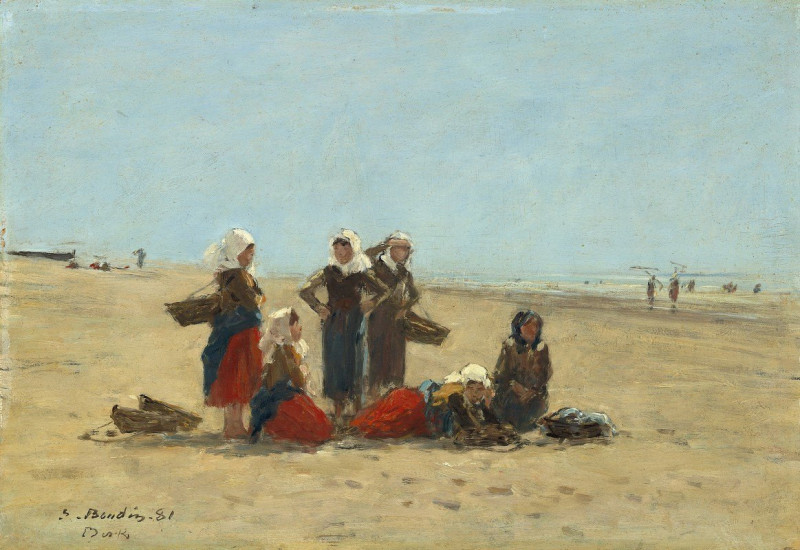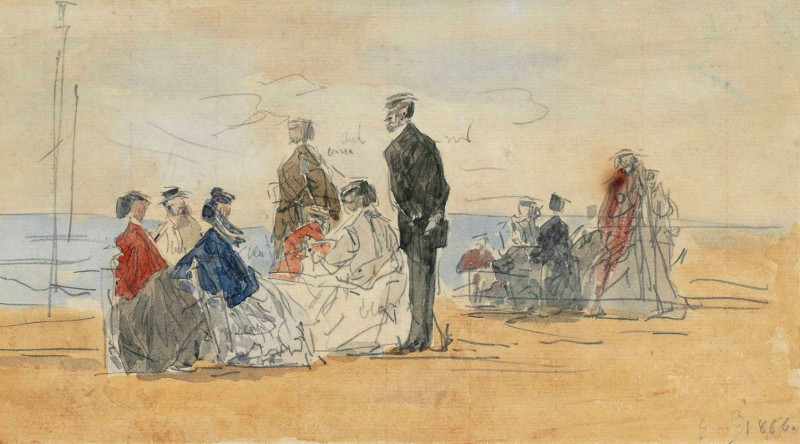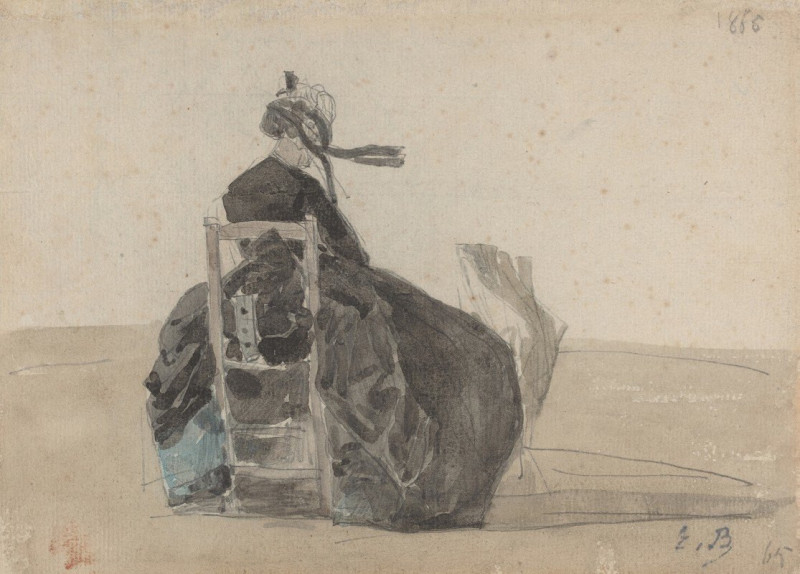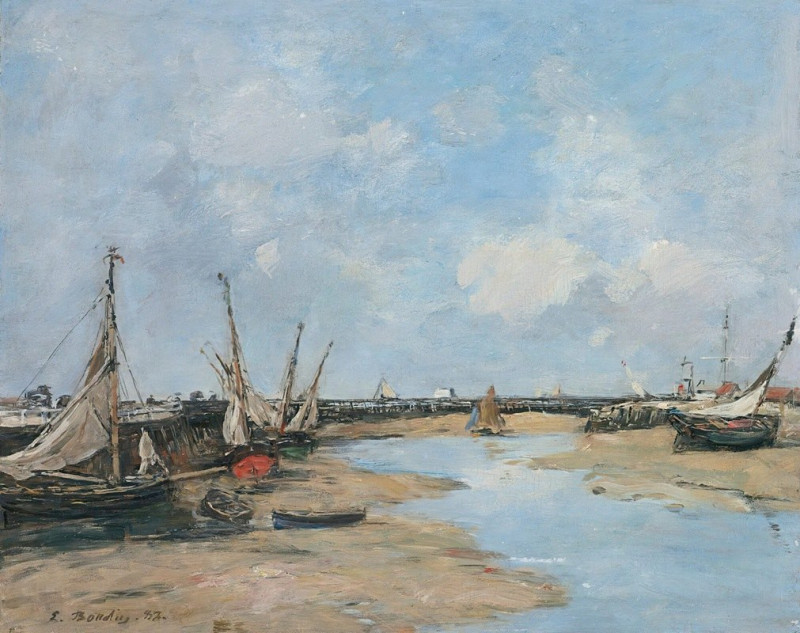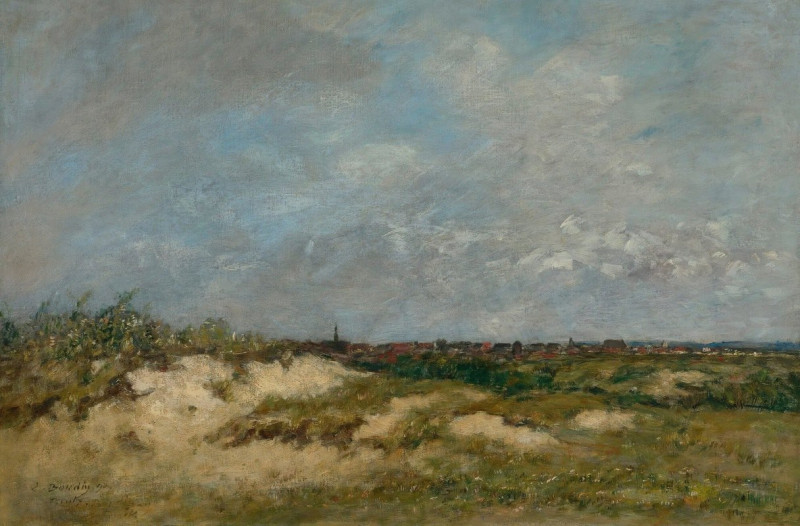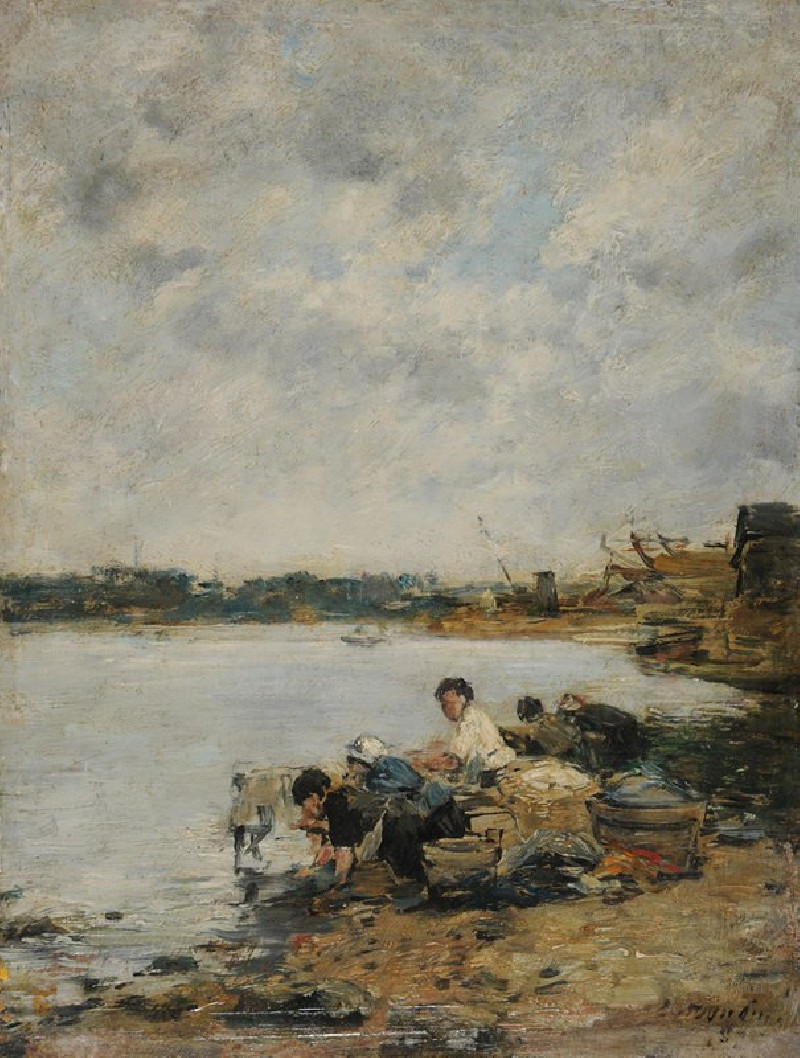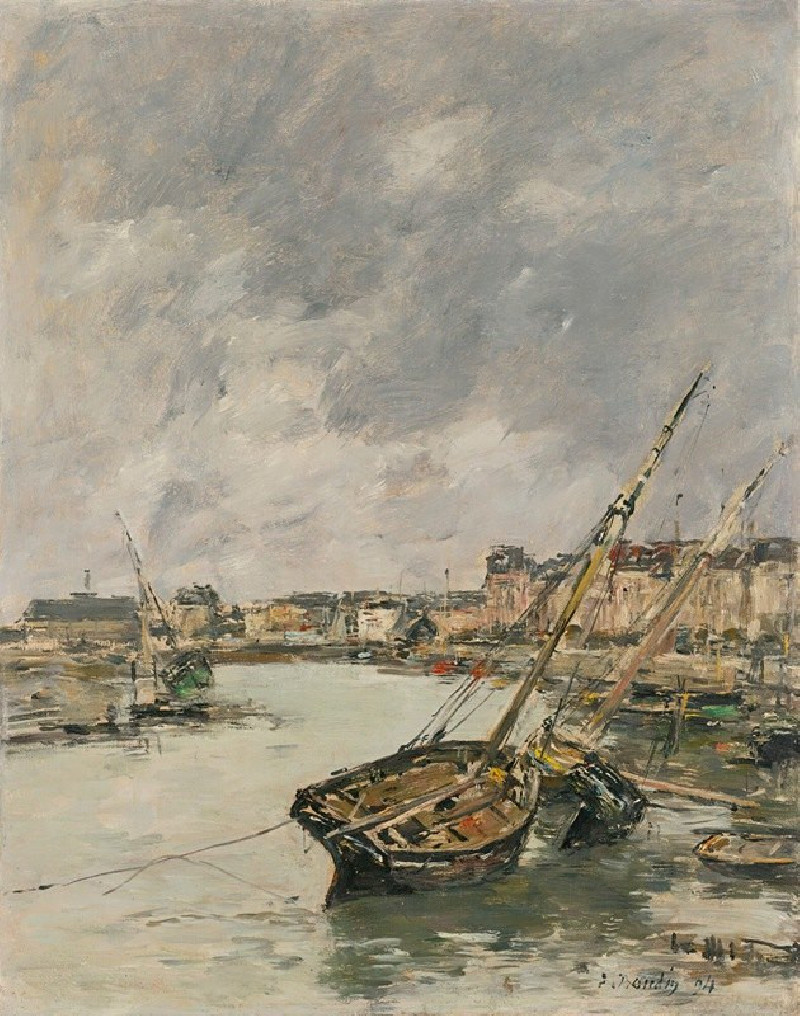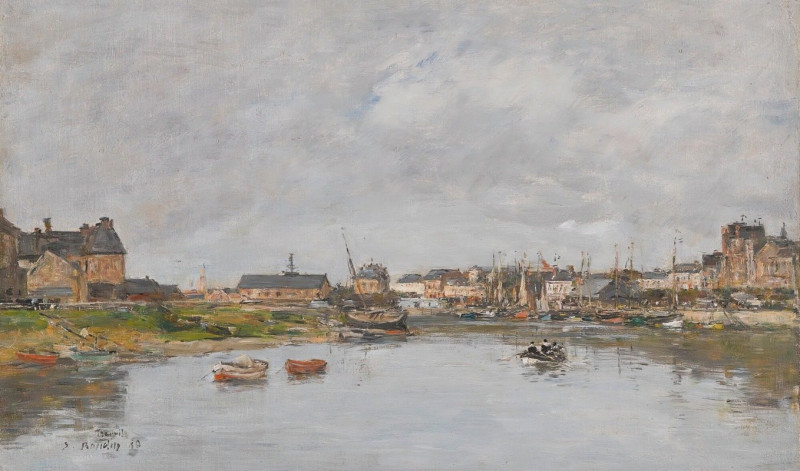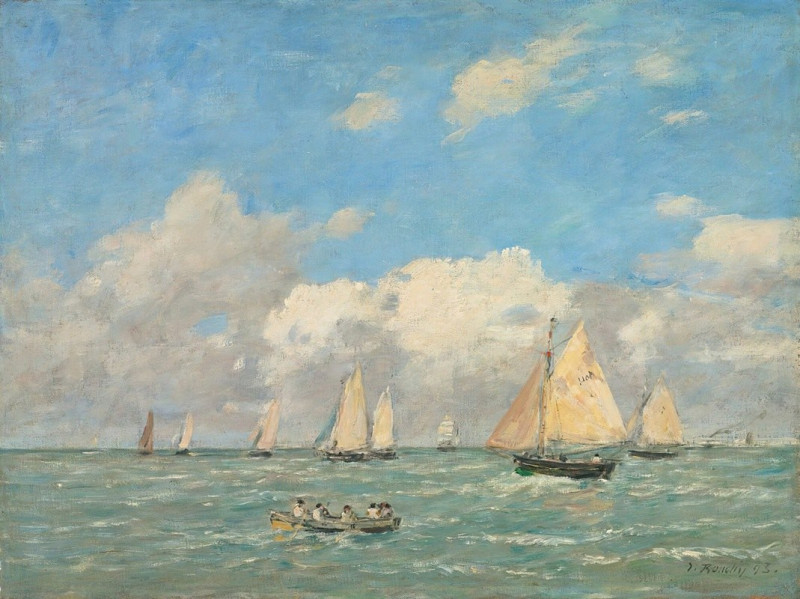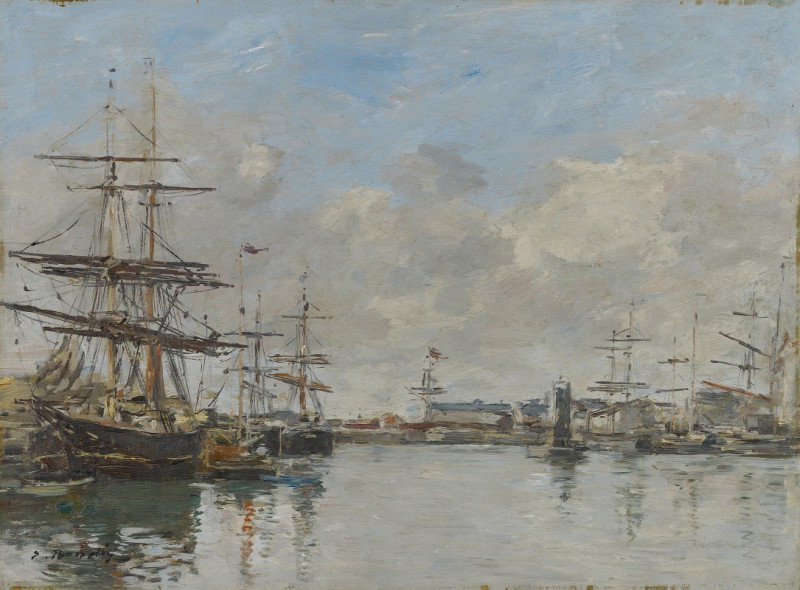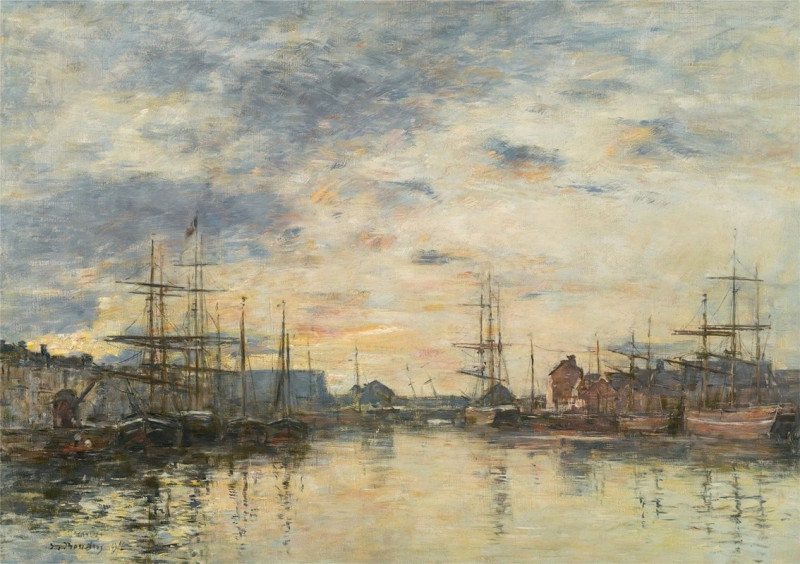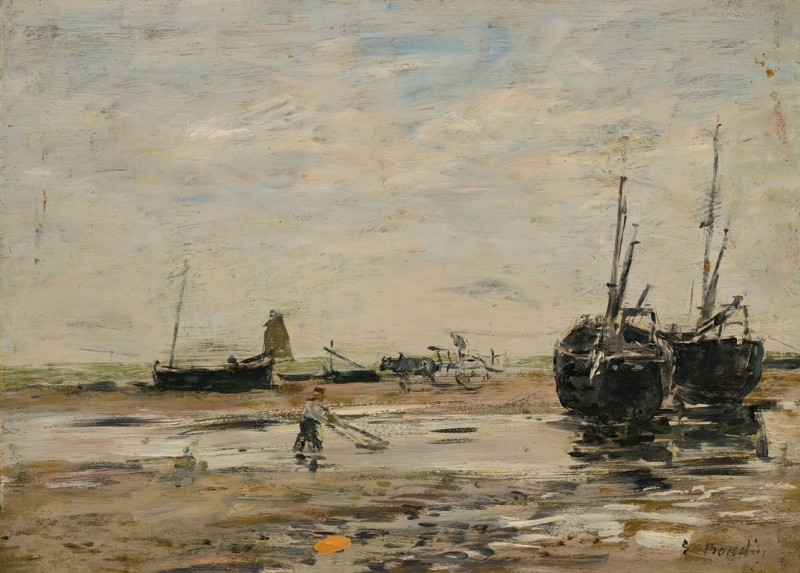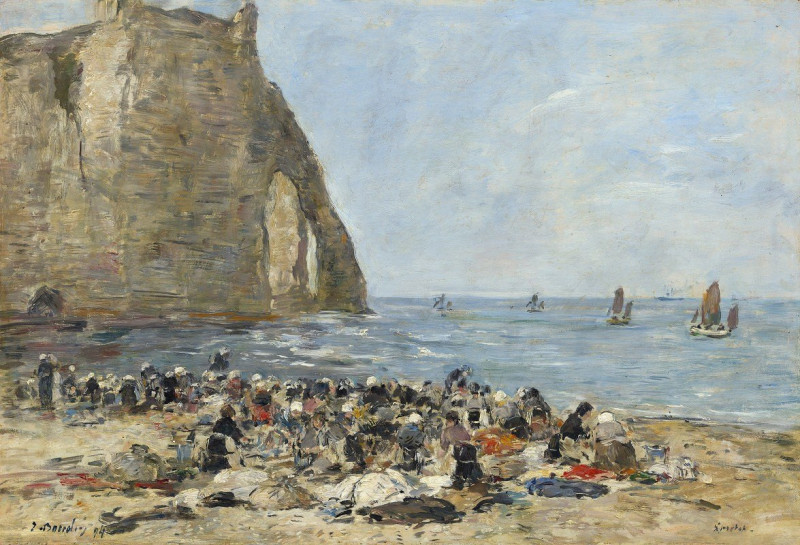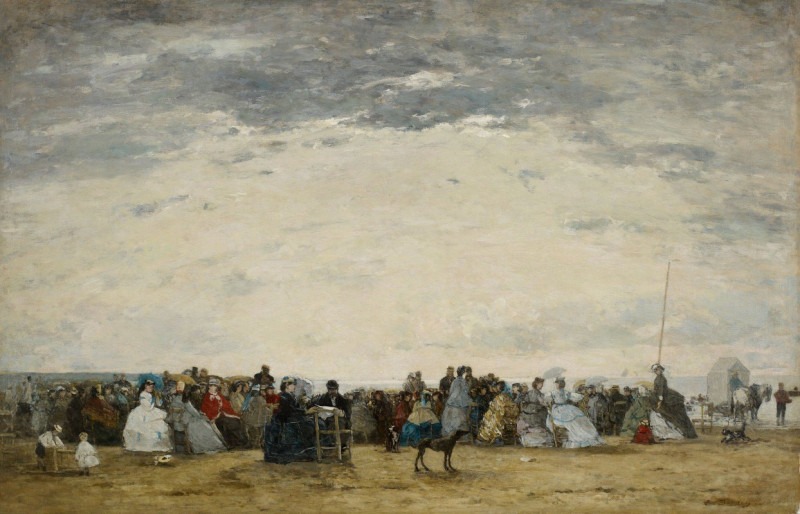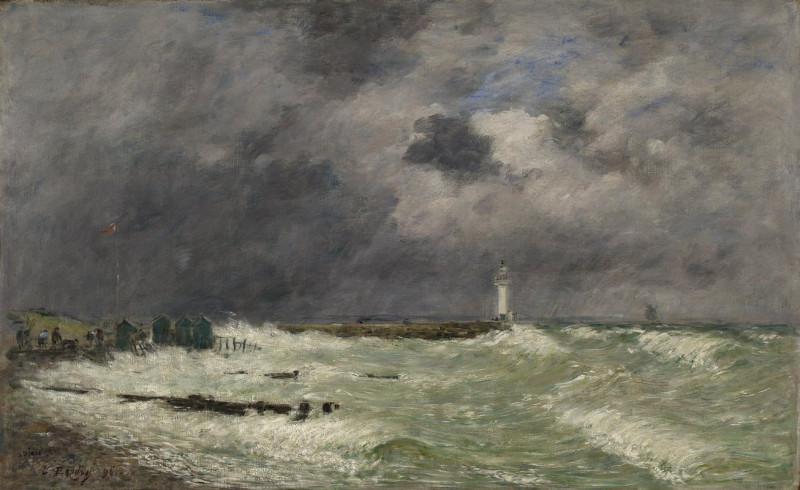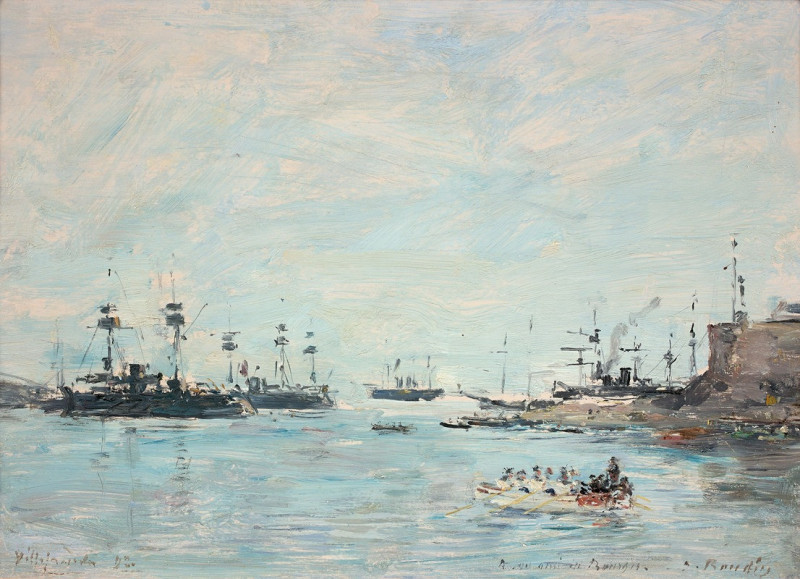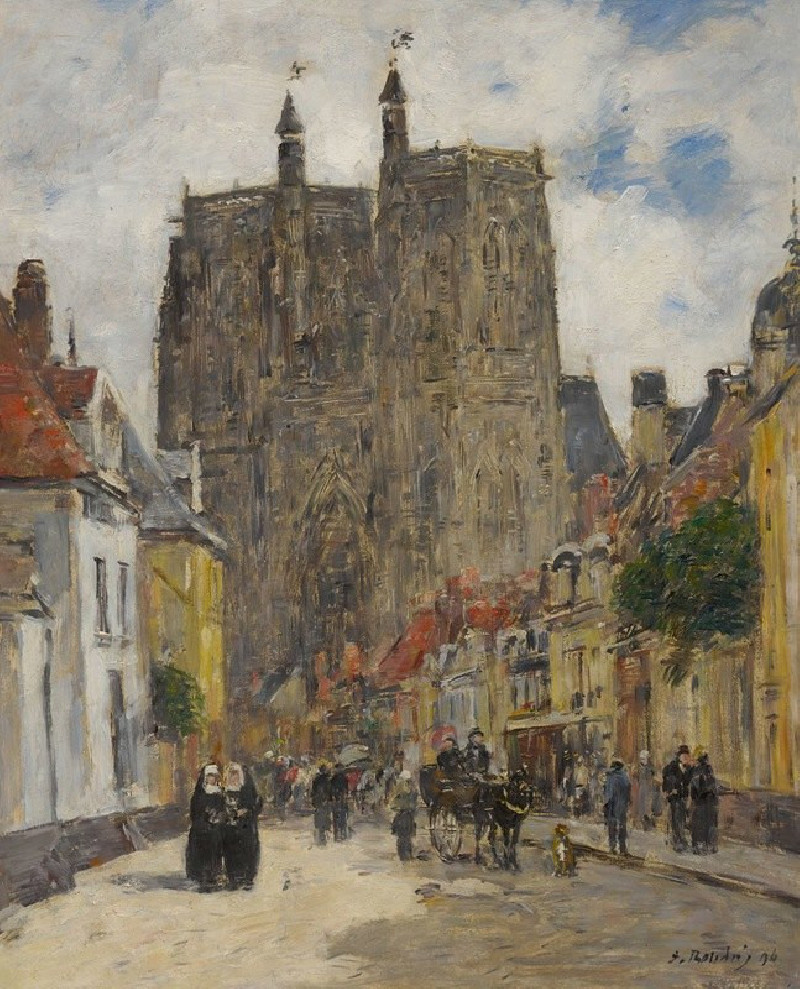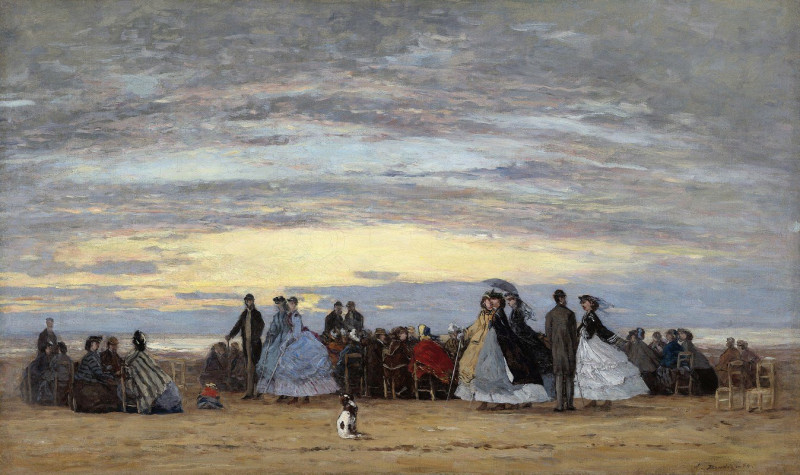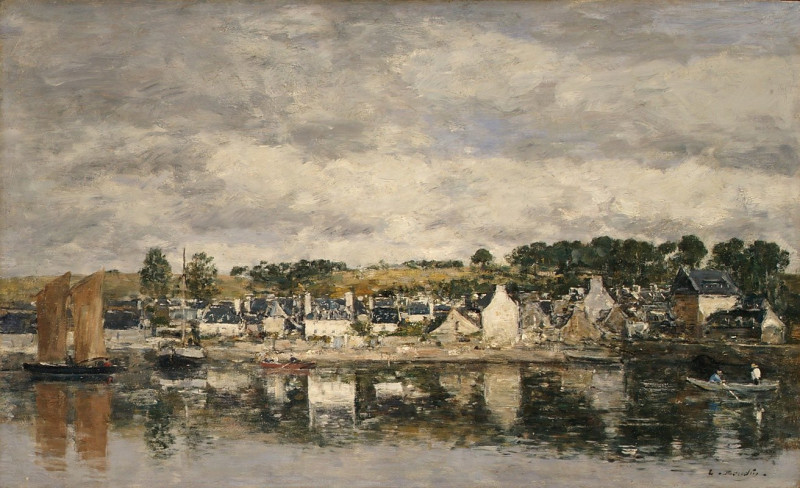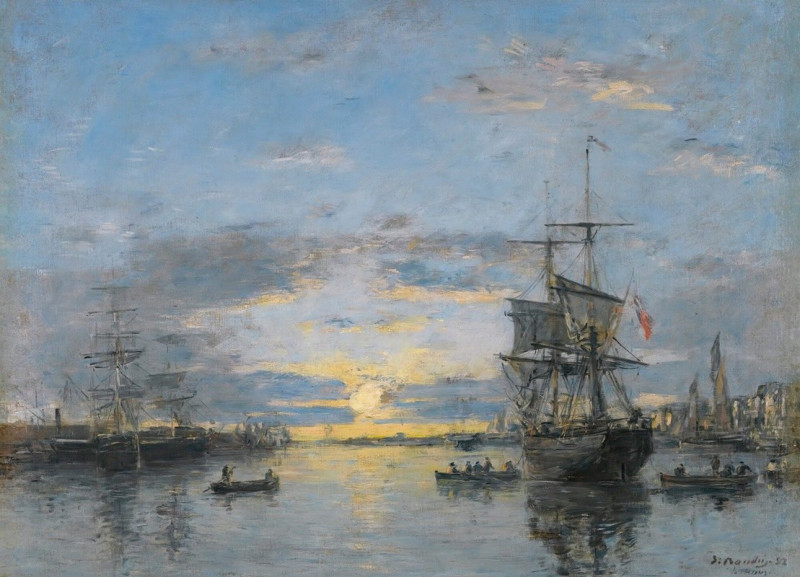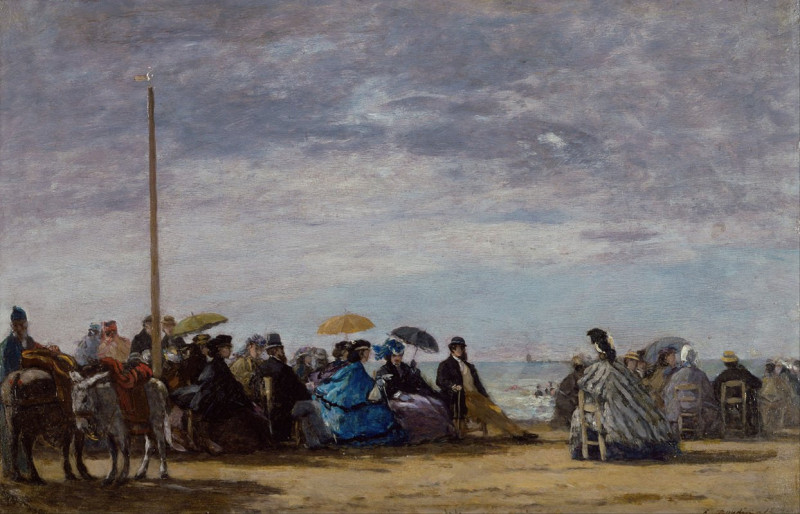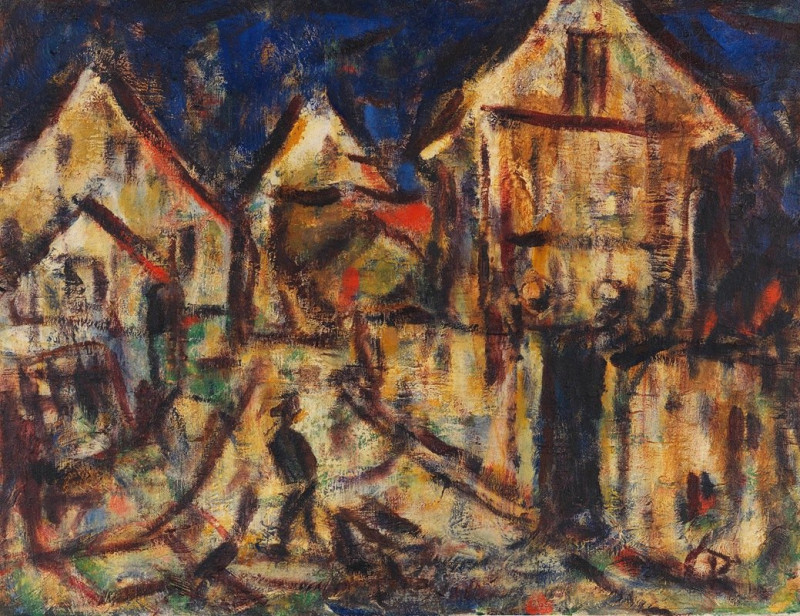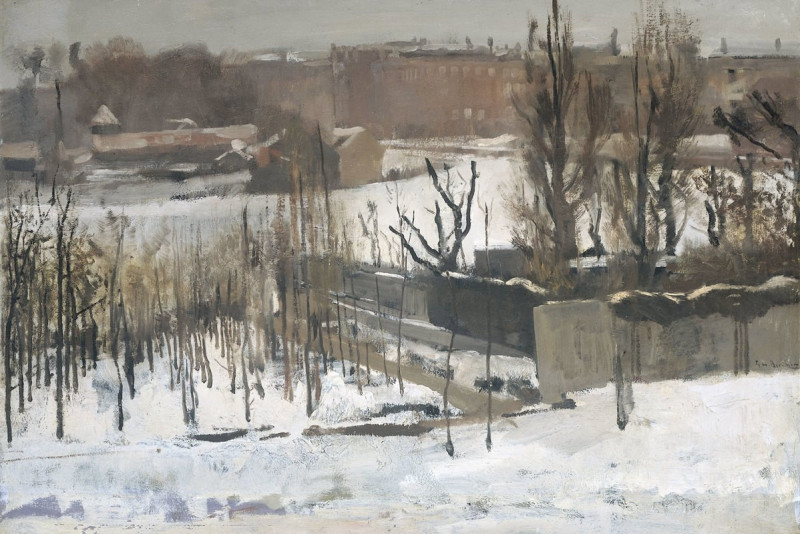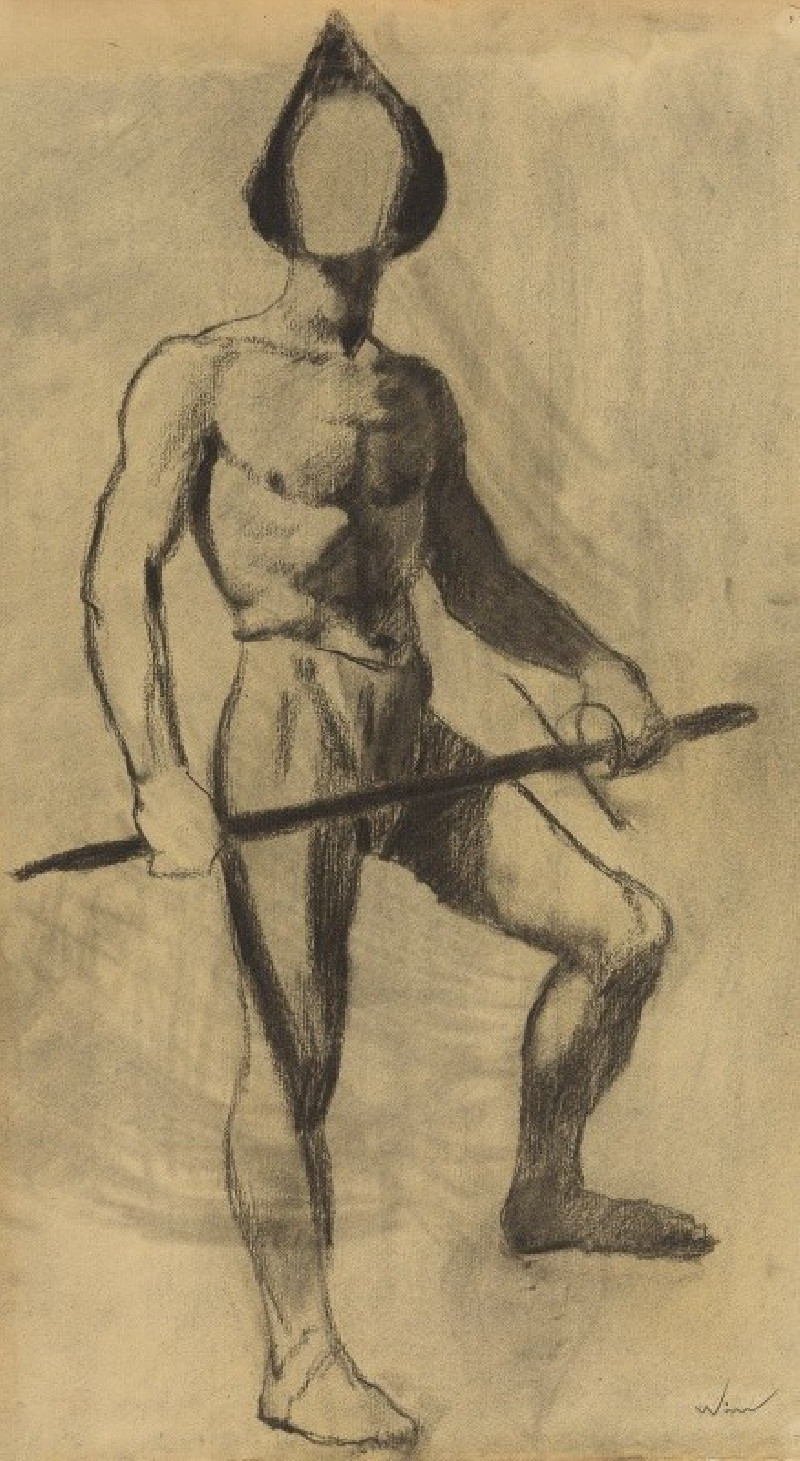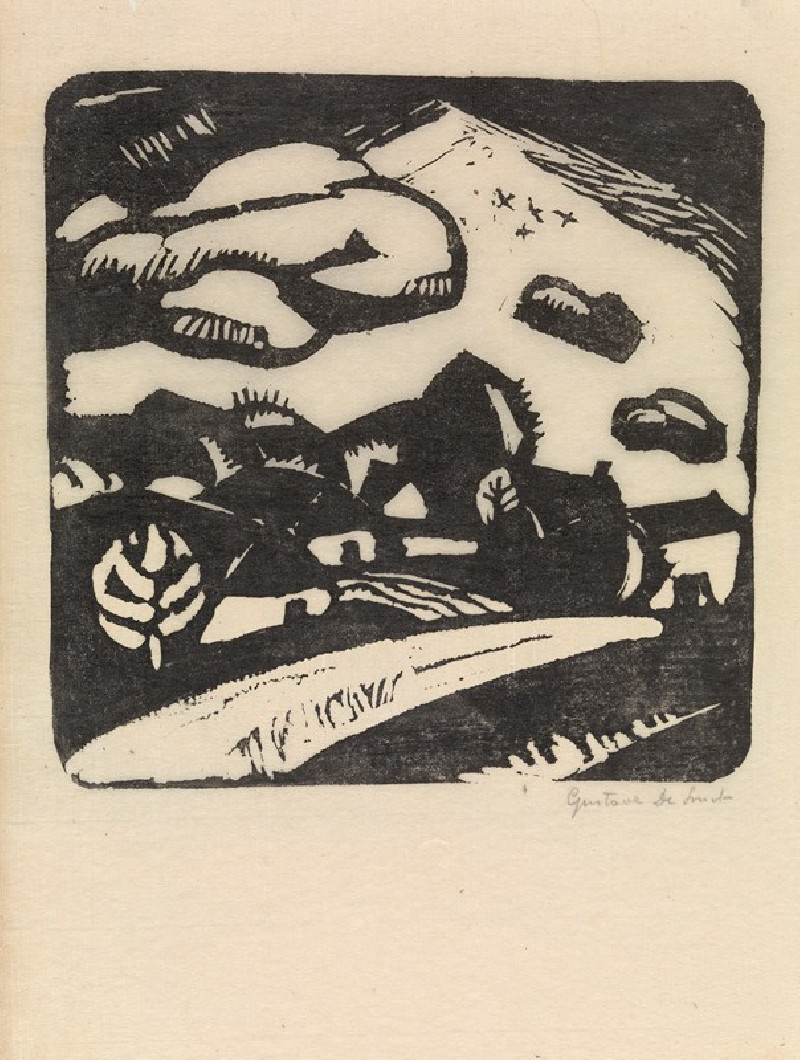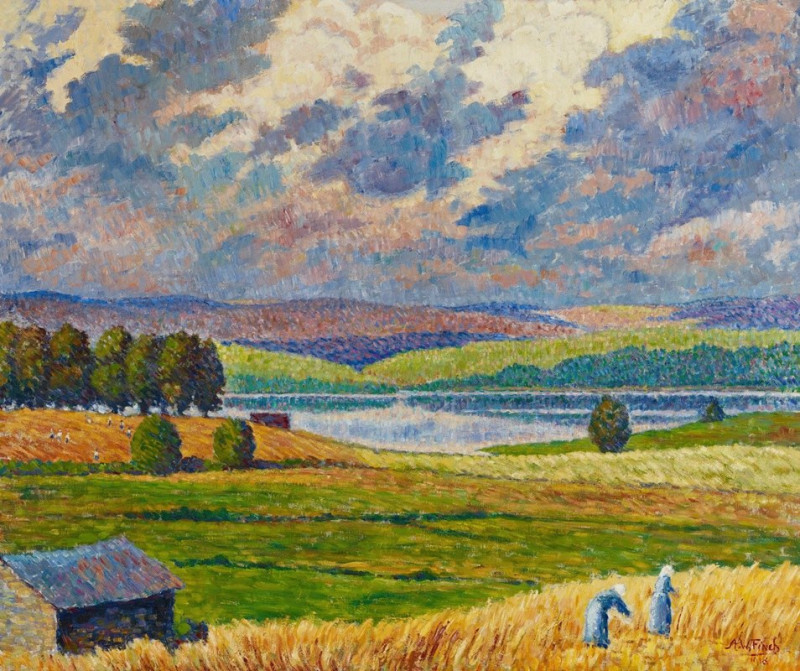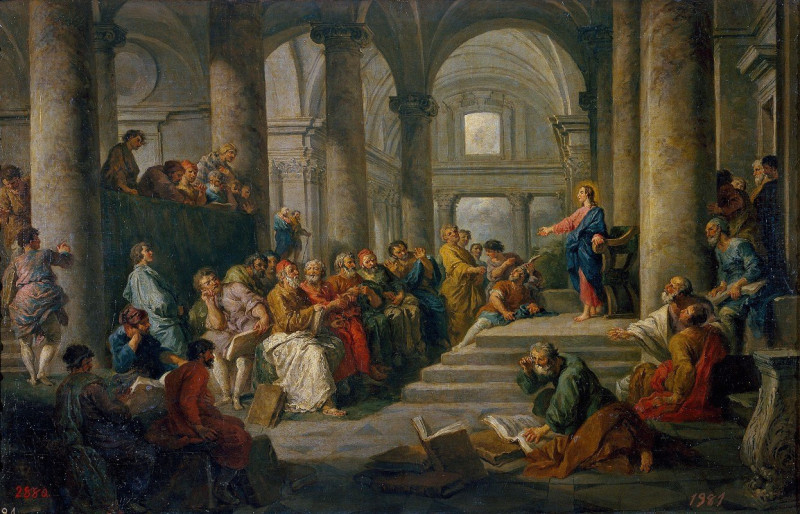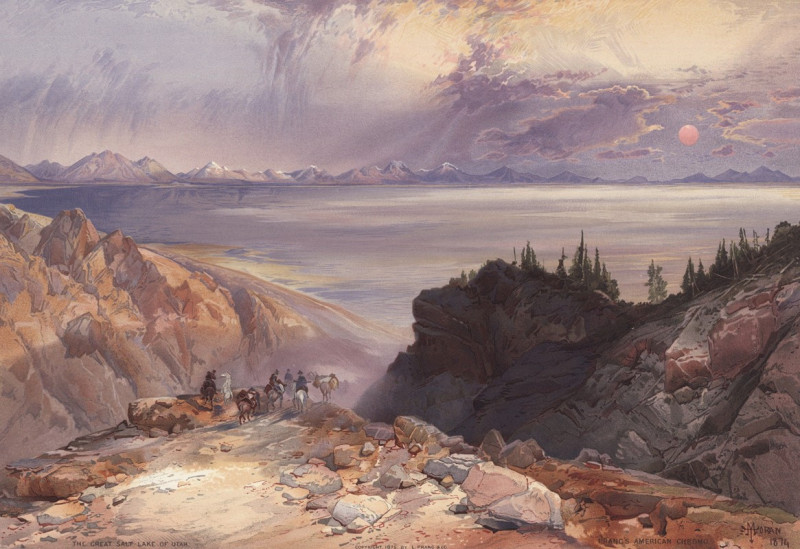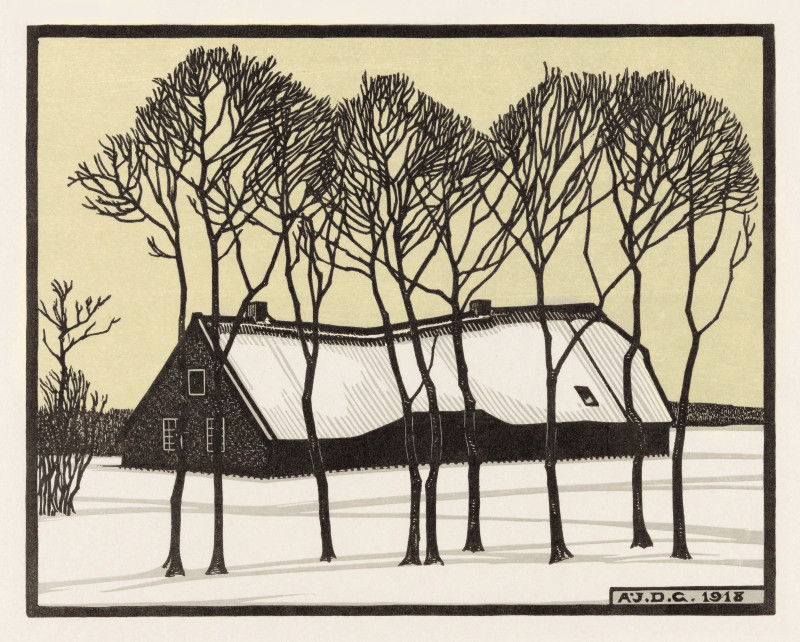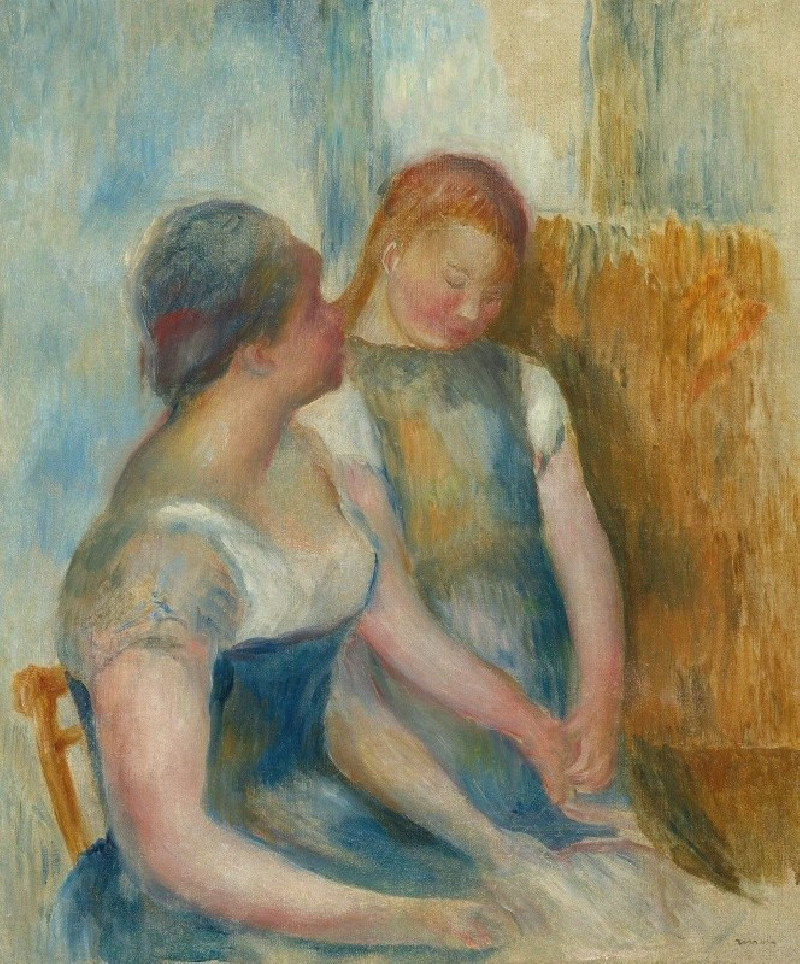Figures on the Beach (c. 1867-1870)
Technique: Giclée quality print
Recommended by our customers
More about this artwork
Our latest exhibit features the distinguished work by French artist Eugène Boudin, entitled "Figures on the Beach," painted approximately between 1867 and 1870. This painting exemplifies Boudin's fascination with maritime landscapes and his innovative approach to capturing everyday life along the coast.In the artwork, you are immediately drawn into a serene beach setting where various groups of people from different walks of life mingle and relax. The expansive sky, vast yet subtle with gentle clouds, sets a calm overture. Below, the artist skillfully depicts the tranquility and leisurely pace of seaside life. A diverse mix of figures, including women in colorful attire and men in more somber clothes, occupies the foreground, each rendered with quick, expressive brushstrokes that convey both the mood of the day and the light breeze that seems to animate their garments.A particularly striking element is a steamship in the distance, marked by its billowing smoke, hinting at the advent of the industrial age and the changes it will bring. This inclusion adds a dynamic contrast to the otherwise placid scene, reflecting on the inevitable intersection of human leisure and technological progress.Boudin's choice of palette, predominantly made up of earthy tones with splashes of color provided by the figures’ clothing, enhances the feel of a casual day out by the sea, making the beach scene vivid and engaging."Figures on the Beach" invites us to reflect on the peaceful moments of human connection with nature and each other, skillfully captured by Boudin’s masterful eye for detail and atmosphere.
Delivery
Returns
Eugène Louis Boudin (12 July 1824 – 8 August 1898) was one of the first French landscape painters to paint outdoors. Boudin was a marine painter, and expert in the rendering of all that goes upon the sea and along its shores. His pastels, summary and economic, garnered the splendid eulogy of Baudelaire; and Corot called him the "King of the skies".


